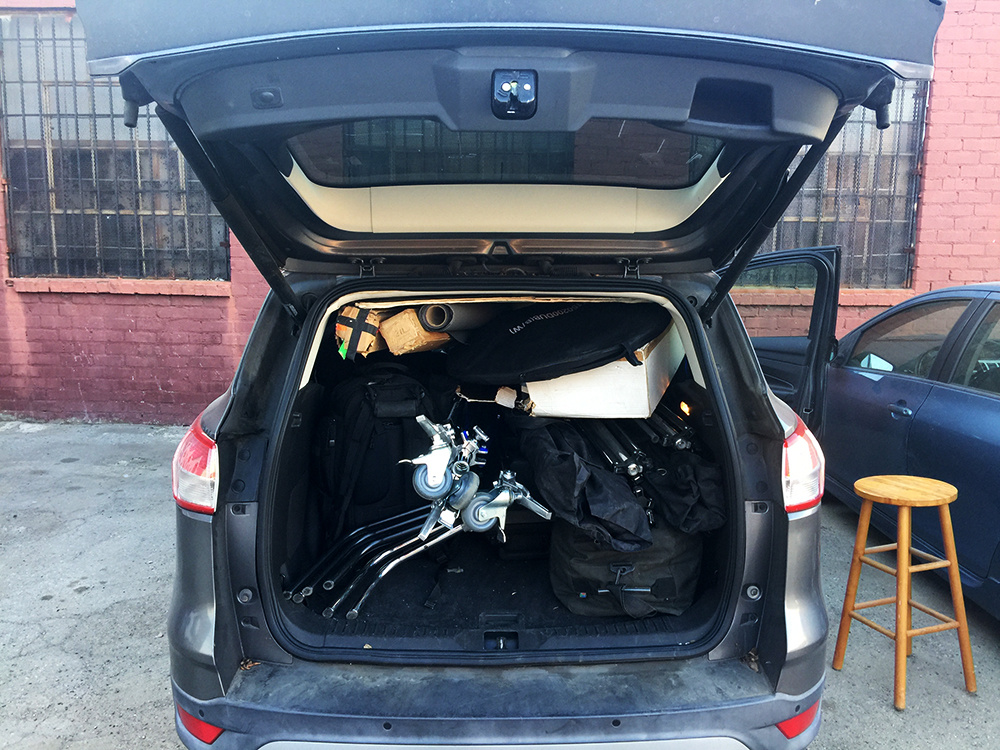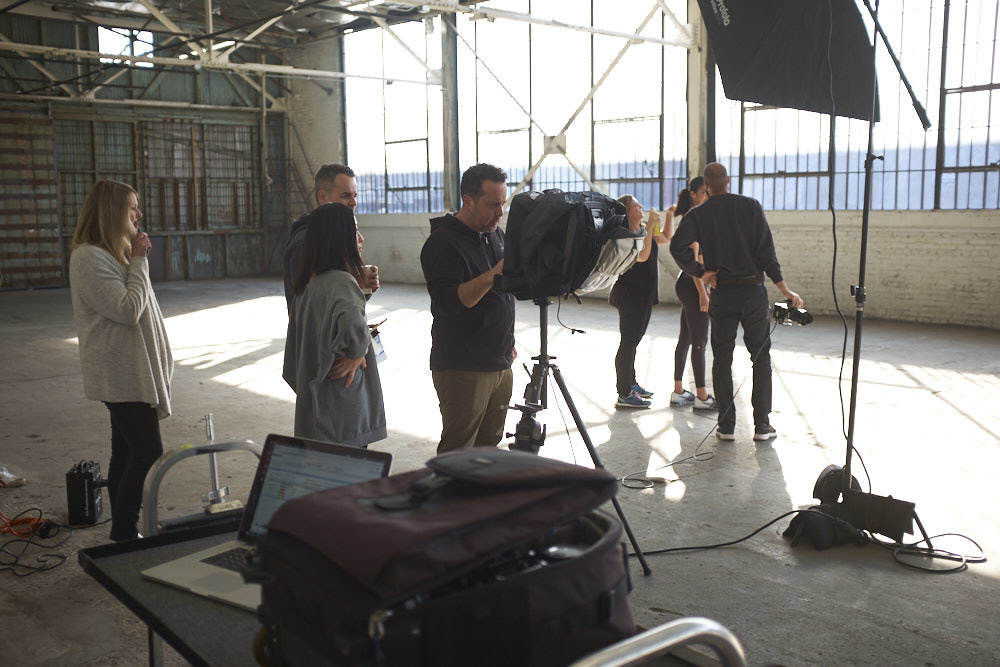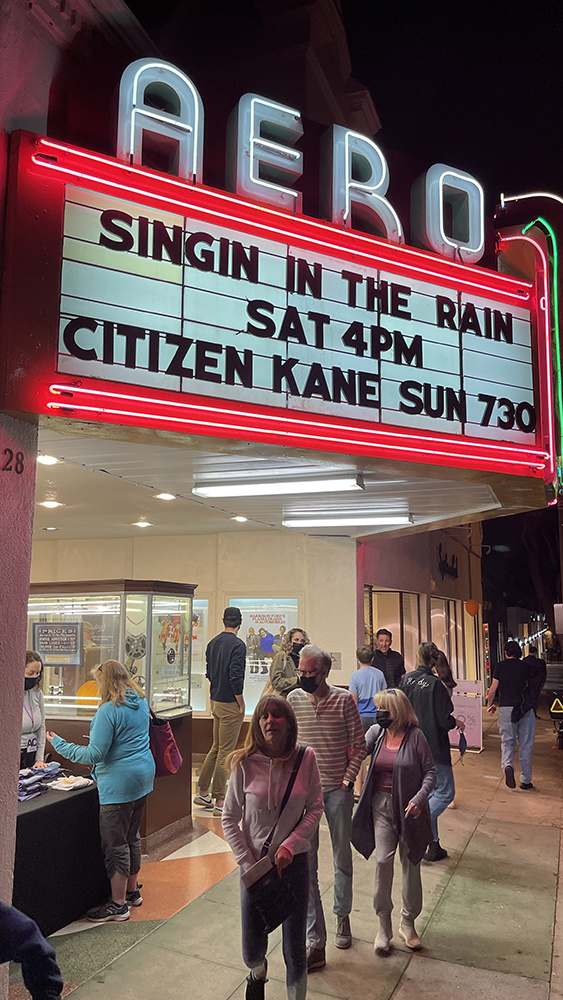
As the old year rolls into the new, it’s that time again to make a few photographic resolutions.
I’ll start off by saying that I don’t really believe in New Year’s resolutions. It’s not that our hearts aren’t in the right place. It’s just that making new year’s resolutions are sort of like going on a diet. Diets never work because they are inherently short-term. We give up candy for a week. Lose a few pounds. Consider the diet a success. But two months later we’re back eating candy and we’ve regained the weight and more. In order to see real change, you have to make a fundamental adjustment to the way you interact with food rather than simply seek a temporary remedy.
New Year’s resolutions can be kind of like that. We all make them around the end of the year. Some of us stick to them for the first day or two of the new year. Most of us have forgotten about them by February. But if we want to make lasting changes to our lives and our careers, what we really should be focusing on is altering the way we are approaching our lives rather than small temporary steps.
But, of course, every journey starts with a single step. And January 1st has always been one of those artificial dates on the calendar that tends to fill me with motivation. So, as we head into the new year, I thought I’d share a few thoughts on what changes I want to make in the new year, which I think many of you will be able to relate to. Let’s just hope they stick.

Shoot First and Ask Questions Later
As my career has progressed, my work has improved. This isn’t bragging. I think pretty much anyone should improve over time if you put in the work to do so. Just as natural, as my skills have increased, so has the level of expectation I have for my work. Images that I might have been thrilled to create just a year ago now wouldn’t come within spitting distance of my portfolio. Images that, for years, have led off my portfolio presentations with clients now leave me cold. In short, the more I learn how to do creatively, the more I want to produce creatively.
Like most people, my greatest strengths can also be my greatest weaknesses. I, for example, am really really good at being organized, planning a specific goal, then having the discipline to accomplish that goal. I’m a Virgo, if you can’t already tell, and planning and organization are kind of my thing.
This also goes hand in hand with my increasingly high aspirations for my work. The more ambitious I get, the more planning is required to accomplish my goals. Because the specific goals are more complicated, they require more time to be invested. Because there are only so many hours in a day, I’ve found myself in recent years putting more time into fewer projects with higher aspirations rather than just doing a lot of smaller projects on a whim. This has done wonders for me professionally. All the extra work has paid off. So, I’m not complaining. But one does run the risk of spending too much time planning and not enough time shooting. I feel like I tipped the balance ever so slightly too much in the planning/procrastination column in the last year. And while I don’t foresee myself reducing my ambition or my production goals any time soon, I do want to make a conscious effort to not let my planning prevent me from shooting. Great can be the enemy of the good sometime. And I want to keep an eye out that, in addition to strategic shooting for my career, I am letting my freak flag fly and allowing myself freedom to follow my inspiration.

Buy Less Stuff
If you read my column on even a remotely regular basis, you will know that I talk a lot about how, in the grand scheme of things, gear doesn’t matter nearly as much as we give it credit for. And, as always, just to avoid the inevitable argument in the comment section, yes, I understand certain gear does certain things and that can help us do our jobs. I’m not arguing that good gear doesn’t cost a lot of money for a reason. I’m simply saying that if we spend just half of the energy we use up bickering about what brand of camera is the best to instead pour into our creative development, we’d all be a lot better off.
Of course, as the saying goes, methinks thou dost protest too much. The reason I often write about not obsessing over gear is because I find it very easy to fall into the trap myself. My articles are meant to help you not make the same mistakes I do. But they also help me in return.
As we grow our careers and creativity, we are constantly looking for new ways to express ourselves through art. So, logically, some of the equipment currently in your possession might literally not be capable of accomplishing the new dream you develop a month from now. Or, perhaps your favorite camera brand will release a product that just allows you to do your daily tasks that much better. There are legitimate reasons to upgrade.
But, math is math. And there’s only so much gear you can buy before you find your bank account heading in the wrong direction. And, even if you do legitimately need a piece of gear, there are often ways, such as renting or buying used, to mitigate the costs so that you can still achieve what you need without always needing to claim ownership of the latest and greatest.
I certainly won’t promise you I won’t buy anything next year. I am in business, after all, and sometimes, you have to spend money to make money. But, having been in business now for a couple decades, I can confirm that spending more money on gear doesn’t always equate to higher profitability. So, a less is more approach to spending will more often than not result in a happier photographer, even if it means you don’t have the shiniest new toys.

Accept Help
While every photographer suffers from Gear Acquisition Syndrome (G.A.S.) to some degree, this next resolution might only apply to some of you. I am a very solitary person. I am incredibly introverted by nature. And this built-in personality trait has only been further fortified by outside factors in my life that have only encouraged me to be even more self-sufficient. The good thing is that I love to learn. If there are 10 jobs required on set, I actually enjoy learning how to perform every job. And largely because my O.C.D. won’t let me do otherwise, as I’m the type of person that won’t stop obsessing over a new skill set until I feel I’ve reached a high level of competency, at least high enough to perform a given task at the level I personally require to create a piece of art.
Being this multifaceted has really been a boon to my career. While my sets these days are usually heavily populated with production personnel, for jobs that require limited manpower, I can often accomplish very similar results all on my own. Make no doubt, your crew makes everything better. And having a great crew is worth its weight in gold. But, especially in the days of a pandemic and shrinking crew sizes, it helps to be able to wear a lot of hats yourself. But, because having multiple skill sets makes it possible for me to achieve a lot of things solo, and because my natural state as an introvert makes me actually prefer being alone in a lot of circumstances, it takes a lot for me to want to bring other people into the equation, both on set and off. But, as I mentioned earlier, our greatest strengths are also our greatest weaknesses. Being able to do a lot solo brings a lot of value to my clients. Sometimes, you simply need help. And being unable or unwilling to ask for it can hurt you in the long run.
There’s the old African proverb that says: “If you want to go fast, go alone. If you want to go far, go together.” One thing that I need to work on is being more open to collaborating with more stakeholders in order to reach my goals. That includes certain crew members, but especially external business partners who could potentially help my business grow if given the opportunity.
Of course, I don’t expect a drastic change here. My independence is as ingrained in me as my moral compass. But making an effort to accept more help from others is something I’d like to work on in the new year and beyond.

Watch Only Good Movies
This one is technically impossible. There’s absolutely no way to know if a movie is going to be good or bad until you’ve seen it. And, if you’re someone who watches as many movies as I do, the mathematical odds are simply not in your favor that you’ll be able to avoid a few rotten eggs from time to time. But I can try. Here’s what I mean.
The onset of the pandemic has forced me to spend way more time at home in the last couple of years than I would previously have thought imaginable. I’m sure I’m not alone in that. If you’re like 99% of the world, you’ve probably filled much of that time watching Netflix, or Hulu, or whatever other streaming service you are currently subscribed to. When it comes to either movies or photography, we live in a world of endless consumption. Our choices for entertainment at any given moment are literally endless. No human could ever possibly consume all the art online or on social media in one lifespan.
In the days before streaming, watching a movie required some investment of time and energy. You had to physically go to the theatre or at least visit your local rental house. Sure, you could watch something on cable, but that required you to know when it was on and, even then, you only had limited options. So, we put much more thought into how much we wanted to see a particular film. Now, I can literally watch almost anything, at any time, with the click of the remote.
So, why have I burned so many hours over the last couple of years watching aggressively average movies on Netflix, movies that I knew full well had no potential to be “great” going in? Sure, they might be mildly entertaining, but, let’s be honest, at best, they would be a way to pass the time.
The truth is that we live in a world where art is hastily being transformed into “content.” I absolutely hate that word for reasons that could be an essay in and of itself, but I will spare you the tirade until at least you get through your New Year’s celebrations. The main problem with living in a world of “content” is that we are losing our ability to discern quality art from just something to put on in the background when we’re texting with our friends. Art, both film and photography, is meant to have an impact. It’s meant to stop you in your tracks not be swiped past. It is meant to mean something. To be memorable.
The reason why one of my resolutions is to stop watching/looking at bad art, is because, as the saying goes, you are what you eat. Personally, I know that when I consume bad art, I tend to start making it myself. It’s not intentional. It’s just that when mediocre becomes the bar, then, on a subconscious level, I tend to find myself aiming for just a little over mediocre rather than reaching for greatness. Not that I’ve achieved greatness. Not that I’ve achieved mediocre. But where you aim, to a large part, determines where your arrow will hit. So, if you are unconsciously modeling yourself after someone else’s lack of ambition, you are, in essence, encouraging your own artistic voice to reach for a lower rung on the ladder than it is capable of grasping.
In turn, if you make more of a conscious effort to digest art at the very highest level, you will innately find that your own artist goals will rise as a result. How can you witness greatness, then accept anything less for yourself? Aim for “Casablanca,” not for Johnny and “Melinda’s Romantic Comedy Formula Movie Part 5” on Netflix. You may not end up making the next “Casablanca,” but, as the saying goes, when you shoot for the moon you have no choice but to end up among the stars. So, in addition to the art coming out of my head in the coming year, it might behoove me to pay a little more attention to the art coming in.
So, those are just a few of my “resolutions” for the coming year. Can you relate? What types of things are you hoping to work on in the next twelve months? And what changes do you wish to make permanent?